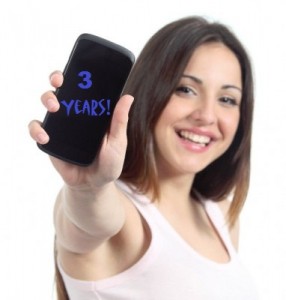A recent study has shown that smartphone users are far more likely to text than make and receive calls.
Mobile Commerce Press has conducted a study that has revealed that when it comes to the use of mobile devices for communication, people aren’t using their smartphones to talk anymore, but are much more likely to send and receive text messages.
The smartphone usage trend study was conducted with the participation of North American smartphone owners.
The survey held by Mobile Commerce Press about communication using mobile devices showed that the vast majority of people are using texting far more than calls in order to reach friends and family. When asked “What percentage do you use your phone for texting vs. talking?”, the responses were as follows:
• 50 percent of the respondents said that they text 80 percent of the time and talk for the remaining 20 percent.
• 22.9 percent of participants said that they talked and texted about the same amount.
• 12.9 percent of the people who voted in the survey said that they couldn’t remember the last time they actually talked on their mobile devices.
• 11.4 percent said that they talked 80 percent of the time and texted 20 percent of the time.
• 1.4 percent, each, said that they used their cell phones exclusively for talk, or used the internet more than talking or texting.
While mobile devices do seem to be used for much more than just talking, this may not necessarily be good news.
 Social and medical research studies are consistently saying that the increase in the use of smartphones for texting, surfing the web, checking email, tweeting, posting on Facebook, and taking pictures, as opposed to actually speaking with friends, family, and businesses, has its drawbacks. This body of evidence is continuing to grow and is suggesting that there are a number of social and communication disadvantages linked with a reduction in spoken communication instead of text based discussions.
Social and medical research studies are consistently saying that the increase in the use of smartphones for texting, surfing the web, checking email, tweeting, posting on Facebook, and taking pictures, as opposed to actually speaking with friends, family, and businesses, has its drawbacks. This body of evidence is continuing to grow and is suggesting that there are a number of social and communication disadvantages linked with a reduction in spoken communication instead of text based discussions.
There are a large number of benefits that are associated with talking with another person over a smartphone instead of sending a text. They include:
• Aside from dropping a quick line to which a response is not necessary, a verbal conversation is nearly always faster than one held over text, even among those who can type on a smartphone faster than the eye can see.
• Talking will almost always communicate a clearer message than texting. Ambiguity is considerably lower when tone of voice is taken into consideration.
• Chatting is far more personal and friendly than a texting, which is usually task-focused.
• Talking doesn’t require your eyes to have to stare at yet another screen.
• Conversations with depth. When you’re sending texts, you won’t receive half of the details and depth that you’d enjoy in a friendly chit-chat.
Of course, even with all of these advantages set aside, possibly one of the best advantages that talk has over text on mobile devices is the fact that auto-correct can keep its bizarre contributions to itself!

 Worden stated that she feels that the credit card industry should be pushing mobile wallets more than they actually are due to the spectrum of advantages it has to offer them. The lack of plastic card manufacturing and distribution, on its own, has great cost saving potential, however, there is a psychological element that Worden feels should not be overlooked.
Worden stated that she feels that the credit card industry should be pushing mobile wallets more than they actually are due to the spectrum of advantages it has to offer them. The lack of plastic card manufacturing and distribution, on its own, has great cost saving potential, however, there is a psychological element that Worden feels should not be overlooked.